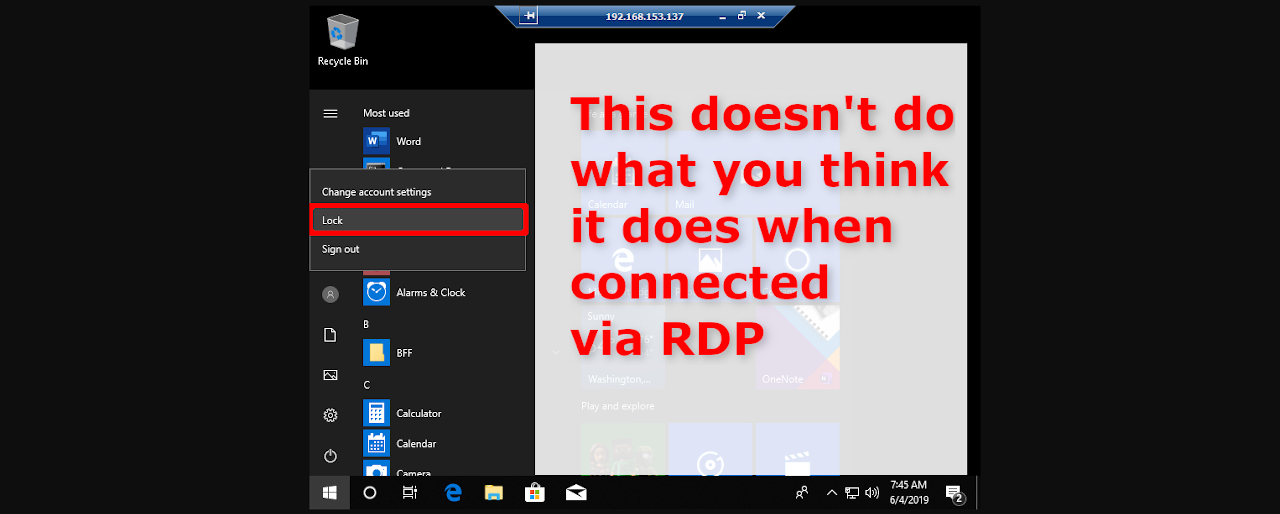The ability to secure your Windows Remote Desktop Server (RDS) with Multi-Factor Authentication (MFA), also sometimes referred to as Two Factor Authentication (2FA), should be very high on your security checklist.


RDS secured with nothing other than a username & password makes it open for attack. Sure, you can use third party products such as RDPGuard to protect your server or even use a port other than 3389, but this is just a reactive approach.

On the Remote Desktop Gateway I am removing the ADC Server as central policy server and add the MFA server (proxy radius): After changing the setting open the NPS Console on the RDG server. We need to change the timeout settings for the request to the radius server as we need time to authenticate to the Azure MFA, answer the call or click the. Duo Authentication for Microsoft Remote Desktop Services Last Updated: January 14th, 2020 Duo integrates with Remote Desktop Web Access (formerly Terminal Services Web Access or TS Web Access) or Remote Desktop Gateway (formerly Terminal Services Gateway or TS Gateway) to add two-factor authentication to RD Web and RD Gateway logons.

To secure your RDS using MFA, all you need is:
- An existing Office365/Microsoft365 tenant (i.e. account)
- A Remote Desktop (RD) Gateway role configured on your RDS
- An Active Directory Server synced with Azure Active Directory (AAD)
Configuring MFA
- Install the Network Policy Service (NPS) on your AD server
- Download and install the NPS Extension on your AD
https://aka.ms/npsmfa - Open PowerShell as Administrator on AD
- Go to c:Program FilesMicrosoftAzureMfaConfig
- Execute .AzureMfaNpsEnxtConfigSetup.ps1
- When prompted for Sign-In, use your Tennant Account
- You will be asked to provide a Directory ID, to get this Sign into https://portal.azure.com Azure Active Directory > Properties
- Paste the Directory ID into PowerShell, and then continue to let the script run
- On your RDS server open up Remote Desktop Gateway Manager
- Right-click the Server name > Properties > RD CAP Store
- Choose ‘Central server running NPS’
- Type in your AD server name or IP address > Add
- Enter in a Shared Secret, note this as it will be used later
- On your RDS server open up Network Policy Server
- Expand RADIUS Clients and Servers > Remote RADIUS Server > TS GATEWAY SERVER GROUP
- Select the RAIDUS Server > Edit > Load Balancing
- Change the Seconds to 60 for both
- Reboot your RDS
- Head over to your AD Server > Network Policy Server
- Right-Click NPS (local) > Register server in Active Directory
- Expand RADIUS Clients and Servers > Right-Click RADIUS Clients > New
- Give it a name such as RDS and then enter the secret you created in step 13
- Expand Policies > Network Policies
- Right-Click Connections to other access servers > Duplicate
- Give it a name such as RDG_CAP
- Double click RDG_CAP > Overview > Grant access
- Conditions > Add > User Groups > Add a AD group who you want to allow
- Constraints > Authentication Methods > Tick Allow clients to connect without negotiating.
- Move the Policy RDG_CAP to the top position 1
All done. If you need a hand feel free to reach out.
Remote Desktop Services Download
Contact IT Networks regarding any aspect of your IT support requirements. All it takes is a brief phone consultation.

